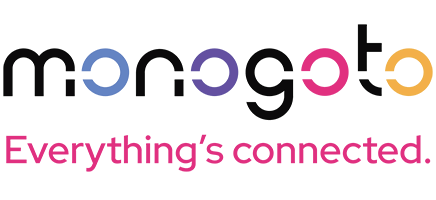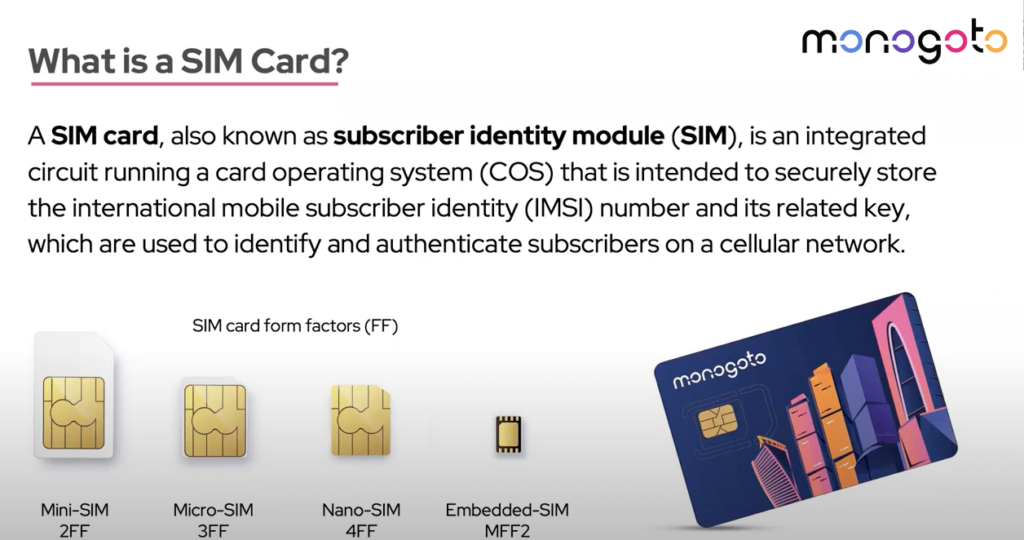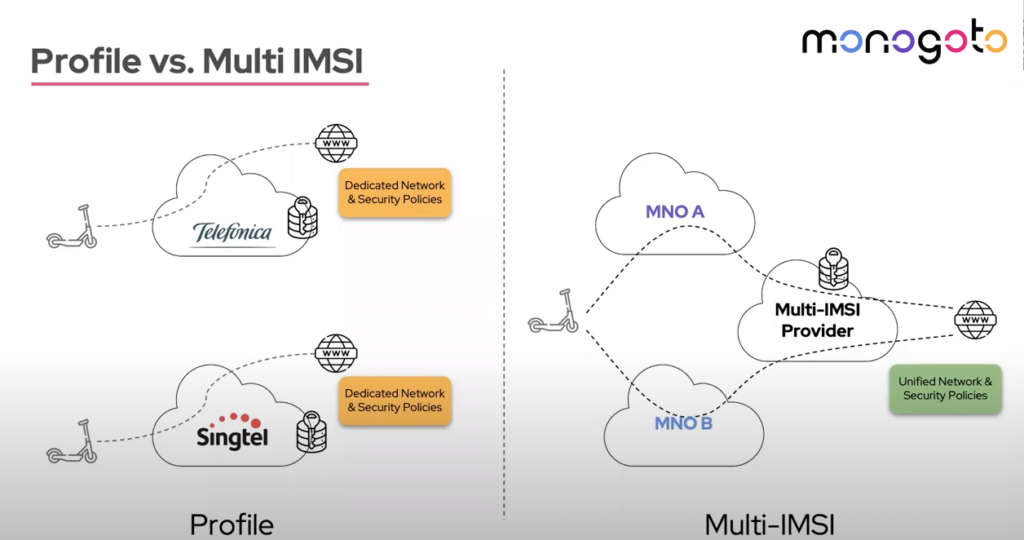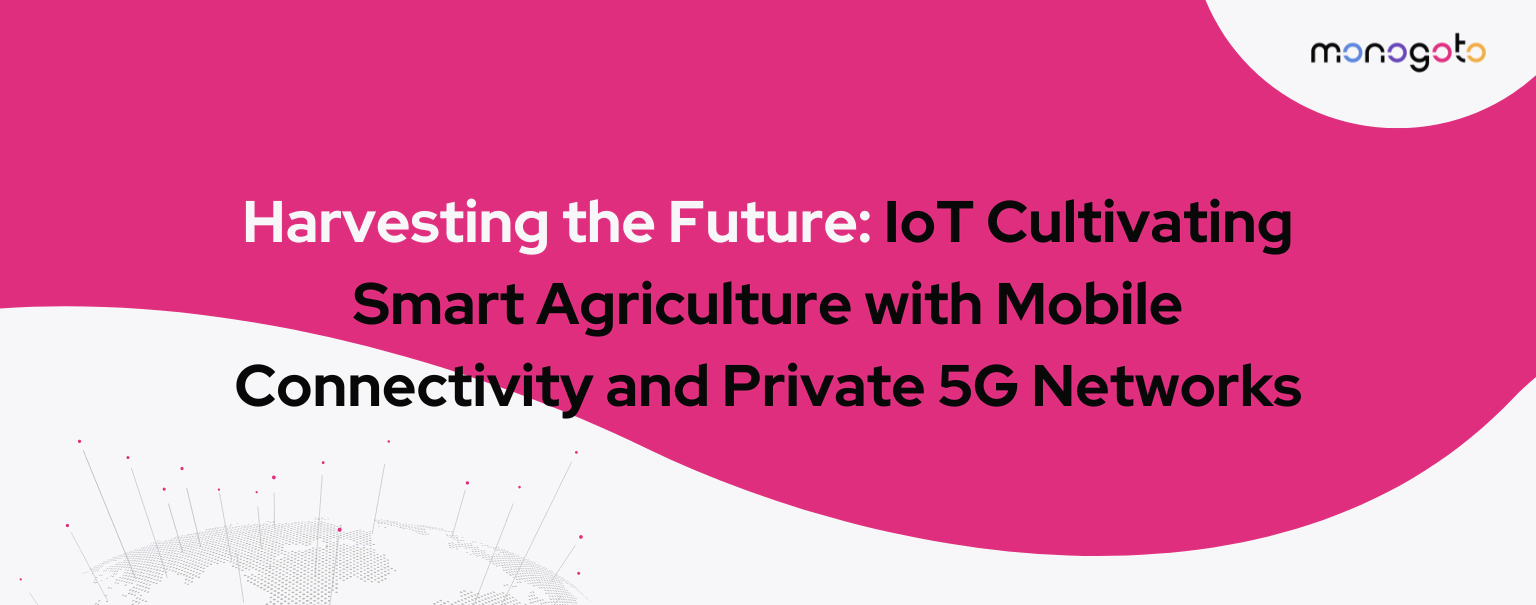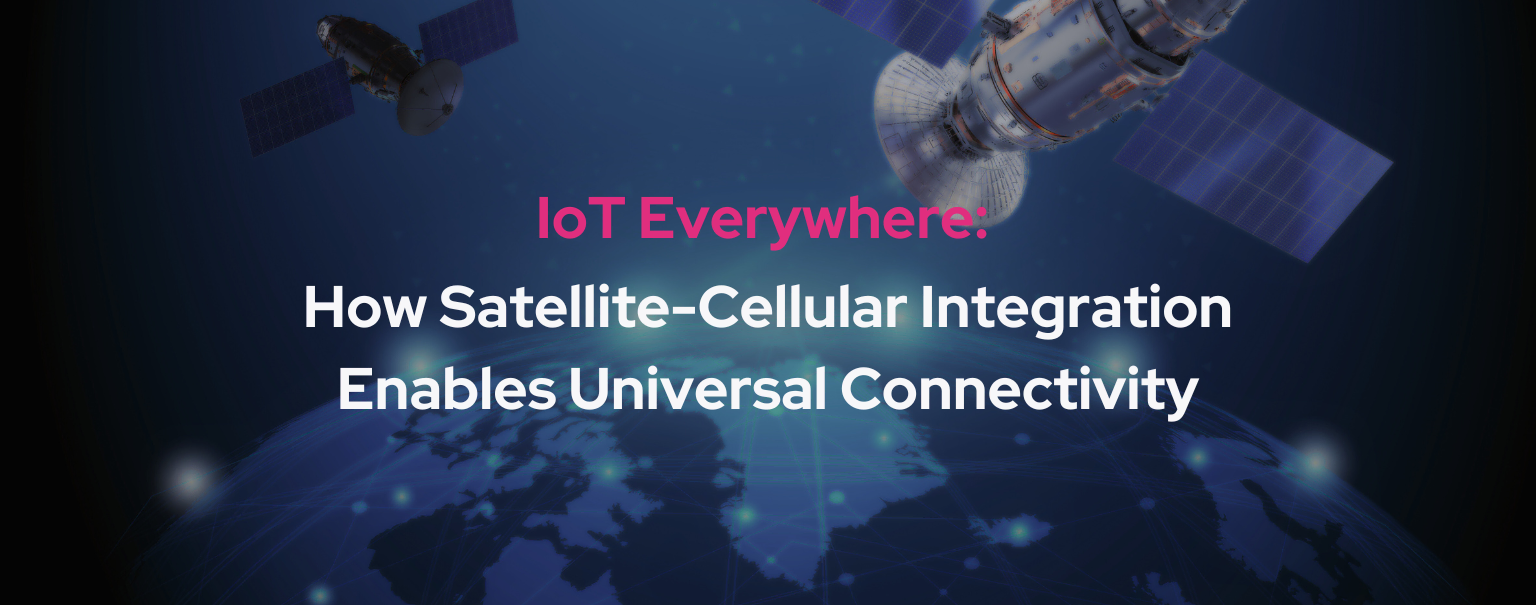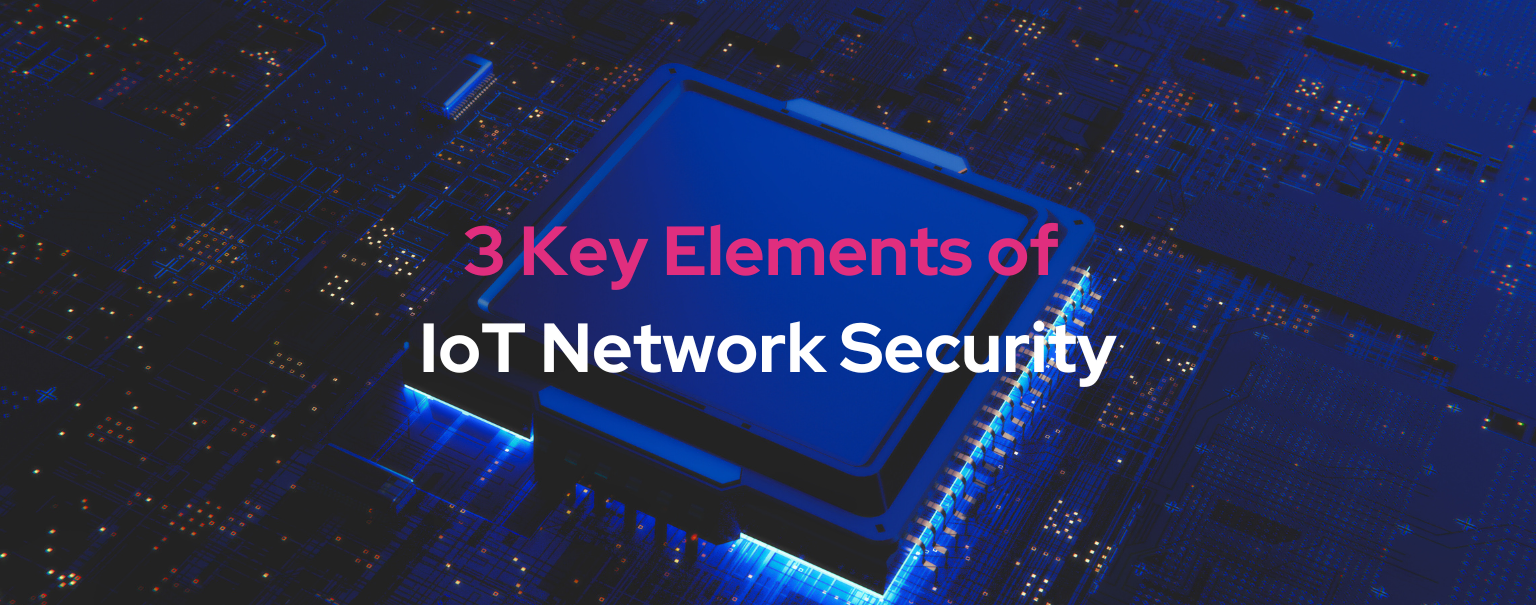Before we get into the specifics of how eSIM is disrupting IoT networking, here are a few common misconceptions about eSIM, eUICC, and embedded sim that are often mixed up:
- eUICC is the 3GPP standard of how to change an operator profile on a sim card (it can work on a regular plastic sim or embedded sim card). There are a few standards for eUICC — some are good for a mobile phone when the user needs to actively scan a QR code and connect the phone to wifi to get an operator identity.
- M2M / IoT eUICC is a new standard from 3GPP that will allow a sensor to connect to the eUICC platform with a bootstrap profile and then pull an operator profile.
- An embedded SIM card is a SIM on a chip that can be soldered to a circuit to reduce cost/moving parts and avoid having to use a physical SIM card in a device
eSIM is sometimes considered to be an eUICC (according to 3GPP), and sometimes just an embedded SIM card.
Cellular networking is used to connect devices ranging from watches to automobiles. At the heart of that connectivity is SIM (subscriber identity module) technology. The sim has multiple form factors (FF): 2ff, 3ff, 4ff (nano sim), and embedded SIM which is also called MFF. To use a real-world example, newer model iPhones currently use embedded sim with an eUICC module that can store multiple different operators’ identities, and the benefits are notable. Not only is eSIM more secure than a physical SIM card in the event your phone is lost or stolen, but functionality allows for multiple eSIM cards to be utilized on a single device. This provides users with greater flexibility, particularly when traveling internationally.
Monogoto is focusing on IoT, and, for IoT, eSIM allows companies to have better flexibility in choosing operators to work with. Here at Monogoto, we provide our partners with access to a cloud-based cellular network that currently provides global coverage in more than 180 countries (and via 550 mobile networks) for immediate connectivity and maximum network resiliency. Our mission is to empower enterprises and developers with simplified, functionality-rich, and secure connectivity for both IoT and private networks, including eSIM technology.
A customer of Monogoto can use our eUICC as a bootstrap profile to get worldwide connectivity and switch to a local operator if needed in a specific country.
To dive further into the topic of how eSIM is disrupting IoT networking, we put together the following webinar to help break down the specifics.
In this video, Maor Efrat, Monogoto’s Co-Founder & CTO, explains the essentials of eSIM and the industry emerging around it.
Here’s a quick breakdown of how eSIM works with the Internet of Things and other connected devices.
The Essentials of SIM
A SIM is an integrated circuit that is designed to run a card operating system (COS). The purpose of the technology is to securely store an international mobile subscriber identity (IMSI) number and its key.
With the IMSI number and key, the SIM card can authenticate users on a cellular network. This type of authentication, also called PKI, is one of the best authentication methods — much better than the PSK that wifi uses to authenticate.
Profile vs Multi-IMSI
SIM cards are designed to hold a single IMSI (operator’s identity) and match it to a single cellular network operator (this is called a Profile). The profile contains any necessary identifiers to connect to just one cellular network, which will include a single IMSI number and key.
Multi-IMSI is a modernized way of expanding SIM technology to match a single device to multiple networks. As the name implies, multi-IMSI can contain multiple identities, each matching with a different network.
It’s simply a way for devices to navigate more than one network with a single SIM card. Monogoto provides a SIM MTK (Monogoto tool kit) that holds multiple IMSI on a single SIM card and can choose the better IMSI based on coverage/price/quality.
eSIM and eUICC
This brings us to eSIM. An eSIM is a digitally programmable SIM that is governed by rules set out by GSMA. It uses eUICC software to communicate on a UICC device. The programmability allows the SIM to store multiple network profiles. In this way, eSIM can function with multi-IMSI properties.
To take things a step further, eUICC profiles can be provisioned and managed via over-the-air (OTA) communication. This makes them highly adaptable to working with a range of cellular networks.
Why Use eUICC?
What’s the point of it all? There are a number of situations where it makes sense to program a single SIM card with multiple networks. As an example, a car manufacturer might want cellular connectivity for a single model that is sold in multiple countries. Each country has different cellular networks. To make manufacturing simpler, every car produced can use eSIM to be compatible with all applicable cellular networks.
Even for smaller-scale projects, eSIM offers a level of future-proofing. Devices utilizing eSIM will have the flexibility to change operators over time, allowing for future changes and adaptations to cellular commitments. In other words, a small business has the freedom to change carriers because its eSIM devices will work with every carrier in the region.
Customer Demand, Deal Economics, and Alternative Solutions
At the core of the industry, large-scale manufacturers tend to license directly with SIM manufacturers. These licensing agreements allow a major company to make products that work with pre-programmed cellular networks. As in the previous example company, Tesla can use an eSIM solution from one of the SIM vendors and later decide on the operator that they want to work with in each region where they are selling cars.
For a business that can’t afford such licensing, the alternative option is to use eSIM as a service, such as Mongoto eSIM. This allows for the same concept of large-scale production — making everything with a single SIM card that works in variable applications.
Invest in a Partnership with the Right eSIM Provider to Ensure You’re Always Connected
The possibilities of eSIM are promising for many businesses and applications, and the team at Monogoto strives to always remain at the forefront of new advances within the industry.
Monogoto is here to make the lives of developers easier by providing cloud best practices to its users and is enabling a smarter, more connected world with its unique, easy-to-access, always-on cellular cloud 4G/5G for IoT connectivity and Private LTE or 5G. Monogoto services high-profile organizations in more than 170 countries with its IoT solutions, enabling roaming capabilities worldwide and supporting 2G, 3G, 4G, LTE CAT-M1, NB-IoT, CBRS, and eSIM technologies.
You can request a sim card sample kit here, or learn more about Monogoto’s services by exploring our website at https://monogoto.io/.
